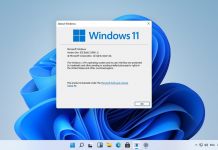1 How to Stop Windows Update and Restart Notifications via Settings2 How to Disable Windows Update and Restart Notification via Group Policy3 How to Roll Back Updates and Check Your Windows 10 Update History
Before we do, however, it’s worth adding the usual disclaimer. Windows updates are very important for the continued stability and security of your operating system. If you do not regularly update, you risk opening yourself up to vulnerabilities that are out in the open but not patched on your PC. Should you disable Windows 10 update notifications? That said, if you’re in the (good) habit of applying updates when you turn off your PC for the day, you may find these notifications unnecessary. In such cases, knowing how to stop Windows 10 update notifications will save you a lot of pain. So, here’s how you can do it using Settings and the Group Policy Editor:
How to Stop Windows Update and Restart Notifications via Settings
How to Disable Windows Update and Restart Notification via Group Policy
How to Roll Back Updates and Check Your Windows 10 Update History
Now that you know how to get rid of the Windows 10 update notification, you may be wondering whether your PC has already updated without your knowledge. You can follow our update history guide to check, then use our rollback guide if you need to go back to a previous version for compatibility.




